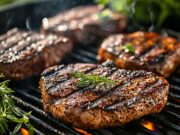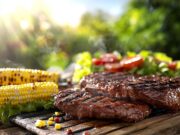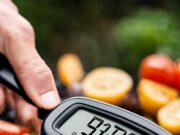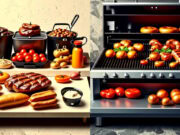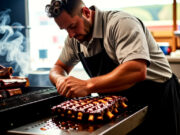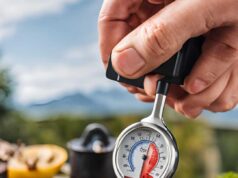- Key Takeaways:
- Not Calibrating Your Meat Thermometer
- Inserting the Thermometer Incorrectly
- Relying Solely on Visual Cues for Doneness
- Only Checking Temperature Once
- Ignoring Carryover Cooking Effects
- Using the Wrong Type of Thermometer
- Forgetting to Clean and Sanitize the Thermometer
- Testing Temperature at the Wrong Spot
- Not Understanding Safe Internal Temperatures for Different Meats
- Overlooking Food Safety Guidelines
- Failing to Allow Meat to Rest After Cooking
- Frequently Asked Questions
Achieving the perfect level of doneness in BBQ can be the difference between a delicious meal and a culinary disaster.
A meat thermometer serves as your best ally in this endeavor; however, improper use can lead to common pitfalls that may compromise your grilling experience. From calibration issues to overlooking food safety, several mistakes can occur, even among seasoned grillers.
This guide is designed to help you navigate these missteps, ensuring that your meat consistently comes out juicy, flavorful, and safe. Continue reading to master the effective use of your meat thermometer.
Key Takeaways:
- Always calibrate your meat thermometer before use to ensure accurate temperature readings.
- Ensure proper insertion of the thermometer into the thickest part of the meat for accurate readings.
- Do not solely rely on visual cues for doneness; always use a meat thermometer to ensure food safety.
Not Calibrating Your Meat Thermometer
One of the most critical mistakes you can make when using a meat thermometer is neglecting to calibrate it regularly. Improper calibration can lead to inaccurate temperature readings, which jeopardizes food safety.
To ensure the precision of your temperature readings, it is essential to calibrate the thermometer frequently, especially when experiencing significant shifts in cooking environments. Effective methods include the ice bath technique, where you submerge the thermometer in ice water for a few minutes, or the boiling water method, which involves placing the device in boiling water to confirm its accuracy.
Ensuring that your thermometer is correctly calibrated is vital for achieving the proper internal temperature of meats. This practice significantly reduces the risk of foodborne illnesses. Cooking meat to the appropriate temperature not only protects the health of consumers but also enhances the overall taste and texture of the dish.
Inserting the Thermometer Incorrectly
Improper insertion of the thermometer probe can lead to misleading results, making correct placement essential for obtaining an accurate temperature reading and ensuring that the meat reaches the desired doneness.
To achieve this, it is crucial to insert the thermometer probe into the thickest part of the meat, steering clear of bone or fat, as these can result in falsely elevated temperatures. For larger cuts, such as roasts, positioning the probe in the center provides the most reliable reading. In terms of poultry, testing the area near the inner thigh is key for accuracy.
Common mistakes include checking the temperature too close to the surface or applying excessive pressure, both of which can distort the results. It is important to remember that incorrect temperature readings not only compromise the quality of the meal but also pose significant food safety risks, increasing the likelihood of foodborne illnesses.
Relying Solely on Visual Cues for Doneness
Many BBQ enthusiasts often make the mistake of relying solely on visual cues to determine meat doneness, which can lead to undercooked or overcooked meat that fails to meet food safety standards. While the color of the meat’s exterior and the juices may offer some clues—such as a pinkish hue indicating it might still be rare—these indicators can be misleading.
Certain cuts may appear well-cooked on the outside while remaining uncooked inside, posing serious food safety risks. Therefore, it is essential to incorporate a meat thermometer into your cooking process, as it provides a precise internal temperature reading.
By combining this tool with visual assessments, such as the firmness and color of the meat, you can achieve optimal doneness without compromising safety or taste.
Only Checking Temperature Once
A common mistake you might encounter is checking the temperature of meat only once during cooking. This can result in an inaccurate assessment of doneness and may pose food safety risks.
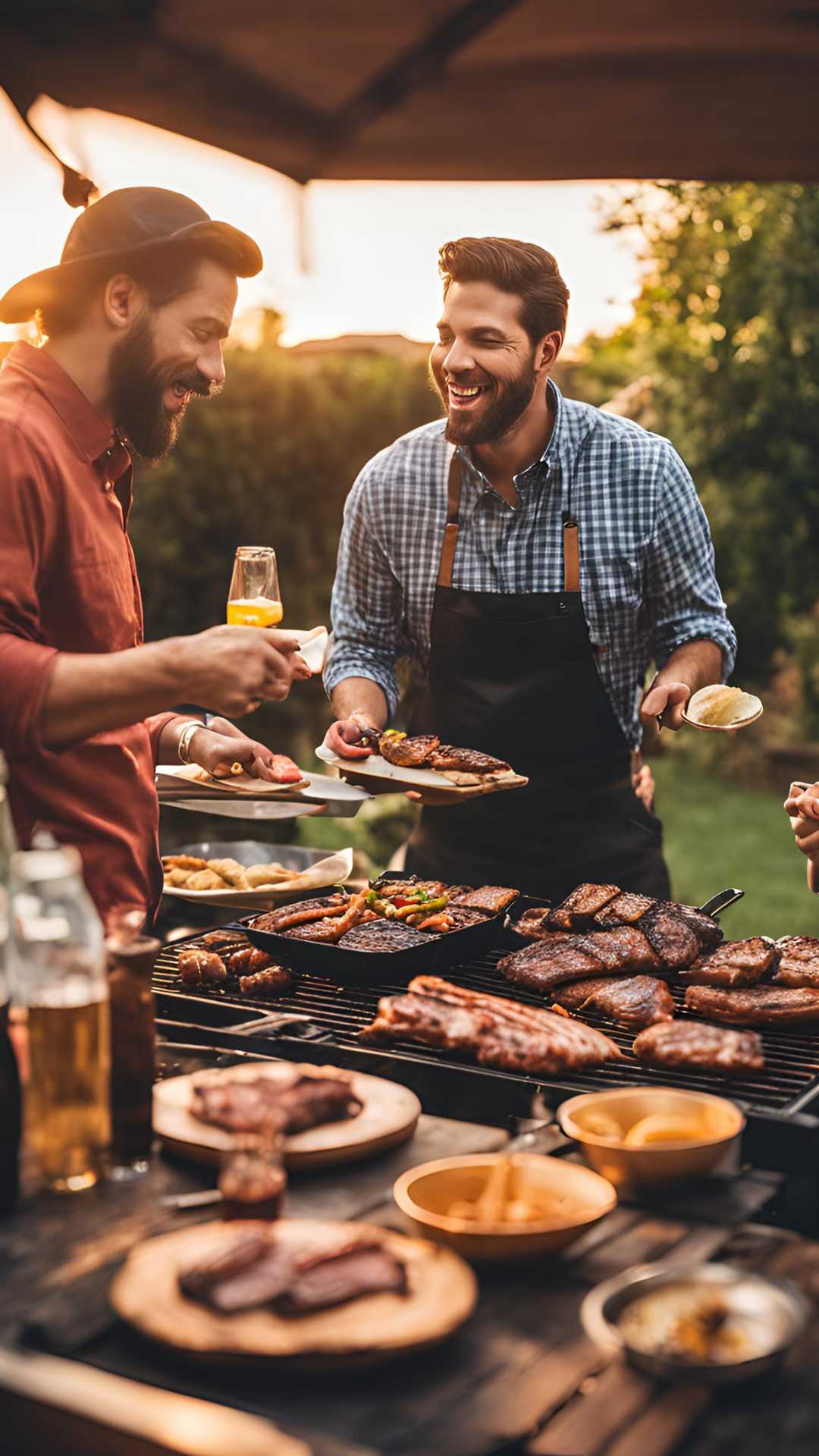
To ensure optimal results, it is essential to perform multiple temperature checks, especially for larger cuts of meat. Each cooking method—whether roasting, grilling, or sous vide—affects how heat penetrates the meat, making it crucial to understand these variations.
For instance, roasting can create a temperature gradient, with the outer layers cooking faster than the center. Additionally, it’s important to consider carryover cooking, where residual heat continues to cook the meat even after it has been removed from the heat source.
This knowledge enables you to achieve the precise level of doneness, ultimately enhancing flavor and safeguarding against foodborne illnesses.
Ignoring Carryover Cooking Effects
Ignoring the effects of carryover cooking can result in overcooked meat, as the internal temperature continues to rise even after you remove it from the heat source.
This phenomenon occurs because the residual heat within the meat redistributes, gradually elevating the temperature for several minutes post-cooking. For example, with beef cuts like steaks, it is not uncommon for the temperature to increase by 5 to 10 degrees Fahrenheit after being taken off the grill or out of the oven. Similarly, chicken breasts are particularly sensitive to overcooking and can experience rising temperatures that may lead to dry meat if not monitored.
To prevent this, it is essential to carefully monitor cooking times and consider pulling the meat when it is about 5 degrees shy of the desired doneness. Allowing the meat to rest for 5 to 10 minutes will enable the juices to redistribute while carryover cooking brings it to the perfect temperature.
Using the Wrong Type of Thermometer
Using the wrong type of thermometer can result in inaccurate temperature readings, making it essential for you to select the appropriate thermometer based on your cooking method and the type of meat you are preparing.
Different types of thermometers serve distinct functions tailored to various culinary tasks. Digital thermometers provide quick and precise readings, making them suitable for most cooking scenarios, while instant-read thermometers are ideal for checking the doneness of meats with ease.
For those who frequently bake or roast, oven-safe thermometers are critical, as they can remain in the food while it cooks, ensuring accurate measurements without the need to open the oven door.
When selecting a thermometer, it is important to consider the methods you commonly use and the types of food you prepare to enhance both flavor and food safety.
Forgetting to Clean and Sanitize the Thermometer
Neglecting to clean and sanitize your meat thermometer can lead to cross-contamination and foodborne illness, compromising the very purpose of ensuring food safety in your cooking.
To maintain a safe kitchen environment, it is essential for you to prioritize hygiene practices, particularly when handling various types of raw meats. A contaminated meat thermometer can transfer harmful bacteria from one food item to another, thereby increasing the risk of poisoning.
After each use, especially when switching between different proteins, it is crucial for you to thoroughly wash the thermometer with hot, soapy water. Consider using a sanitizing solution or alcohol wipe for added protection.
Familiarize yourself with proper storage techniques to ensure that the thermometer is kept in a clean, designated spot away from potential contaminants.
By implementing these straightforward yet effective cleaning methods, you can significantly reduce the chances of cross-contamination while preparing meals.
Testing Temperature at the Wrong Spot
Testing the temperature at the wrong spot on the meat can result in inaccurate readings, potentially compromising the quality and safety of your food. It is crucial to understand the correct probe placement to ensure a thorough and safe cooking process.
For chicken, the thermometer should be inserted into the thickest part of the breast or the innermost part of the thigh, taking care to avoid bones, as they can yield misleading results. When working with beef, particularly large cuts like roasts, the thermometer should be positioned in the center, away from any fat or bone to ensure accuracy.
Pork requires similar attention; placing the thermometer in the thickest part of the loin or shoulder will provide an accurate reading. Misplacing the thermometer in these meats not only risks undercooking but can also lead to foodborne illnesses, emphasizing the importance of proper technique.
Not Understanding Safe Internal Temperatures for Different Meats
Understanding the safe internal temperatures for various types of meat is essential for ensuring food safety, as each type of meat comes with its specific cooking temperature guidelines.
Cooking meats to these recommended temperatures not only eliminates harmful bacteria but also significantly enhances the overall quality and flavor of your dishes. For example, the USDA recommends that chicken should reach an internal temperature of 165°F. In contrast, whole cuts of beef, pork, and lamb should achieve at least 145°F, followed by a resting time of three minutes. Ground meats must be cooked to 160°F to ensure safety, while fish should be cooked to a safe temperature of 145°F to achieve optimal tenderness and flavor.
By adhering to these guidelines, you can enjoy delicious, nutritious meals without the risks associated with undercooked meat.
Overlooking Food Safety Guidelines
Overlooking essential food safety guidelines while cooking can lead to foodborne illnesses, making it imperative for you to adhere to recommended practices for safe cooking and handling.
When grilling, it is crucial for you to pay close attention to key aspects such as the proper cooking temperatures for different types of meat, which can vary significantly. For example, poultry should reach an internal temperature of 165°F, while ground meats typically require 160°F. Most cuts of beef can be safely consumed at 145°F.
Equally important are safe food handling practices, which include keeping raw and cooked foods separate and washing your hands frequently. The effective use of a meat thermometer is essential; it not only ensures that meats are cooked to the correct temperature but also greatly reduces the risk of foodborne illness. By adopting these actionable cooking safety tips, you will ensure a delicious and safe BBQ experience for everyone.
Failing to Allow Meat to Rest After Cooking
Failing to allow meat to rest after cooking can lead to a significant loss of quality and juiciness, as this resting period is crucial for retaining moisture and achieving the desired texture.
This essential practice is vital for anyone aiming to enhance the overall dining experience, particularly regarding flavor and tenderness. During the cooking process, the juices within the meat move toward the outer edges due to heat, which can result in a dry bite if the meat is cut too soon.
By allowing the meat to rest, those juices have the opportunity to redistribute throughout the cut, yielding a more succulent and flavorful meal. Typically, larger cuts, such as roasts, should rest for about 20-30 minutes, while smaller cuts like steaks may only require 5-10 minutes.
A good rule of thumb is to rest meat for approximately one minute per ounce cooked. This practice not only maximizes quality but also minimizes the risk of ruining what could have been a perfectly cooked dish.
Frequently Asked Questions
1. What are some common mistakes to avoid when using a meat thermometer for BBQ?
Some common mistakes to avoid include not calibrating your thermometer, using it in the wrong part of the meat, and not properly cleaning it after use.
2. Why is it important to calibrate a meat thermometer before using it for BBQ?
Calibrating your thermometer ensures that it is reading accurate temperatures, which is crucial for achieving the desired level of doneness and avoiding undercooked or overcooked meat.
3. Can using a meat thermometer in the wrong part of the meat affect the accuracy of the temperature reading?
Yes, inserting the thermometer in the wrong spot can give you an inaccurate reading. Make sure to insert the thermometer in the thickest part of the meat, away from any bones or fat.
4. How can not properly cleaning a meat thermometer impact food safety?
If not properly cleaned after use, a meat thermometer can harbor harmful bacteria which can contaminate your food and potentially cause foodborne illnesses.
5. Is it safe to use the same meat thermometer for different types of meat?
No, it is not recommended to use the same thermometer for different types of meat as it can lead to cross-contamination. It is best to have separate thermometers for different types of meat.
6. What should I do if my meat thermometer is not working properly?
If you suspect that your meat thermometer is not working properly, it is best to test it using the ice water method or boiling water method to determine if it is reading accurate temperatures. If not, it may be time to replace your thermometer.







